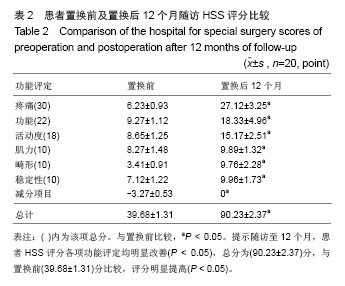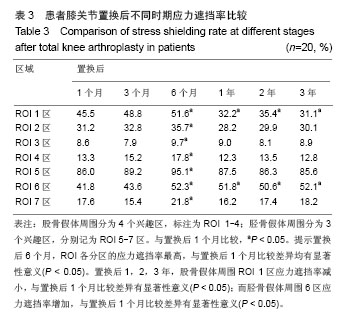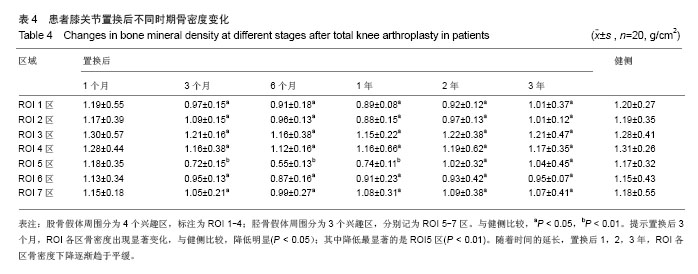| [1]DeCrane SK, Stark LD, Johnston B, et al. Pain, opioids, and confusion after arthroplasty in older adults. Orthop Nurs. 2014; 33(4):226-232.
[2]Losina E, Paltiel AD, Weinstein AM, et al. Lifetime medical costs of knee osteoarthritis management in the United States: Impact of extending indications for total knee arthroplasty. Arthritis Care Res (Hoboken). 2014; 21(2):312-317.
[3]Zhang S, Paul J, Nantha-Aree M, et al. Empirical comparison of four baseline covariate adjustment methods in analysis of continuous outcomes in randomized controlled trials. Clin Epidemiol. 2014;6:227-235.
[4]Skedros JG, Knight AN, Thomas SC, et al. Dilemma of high rate of conversion from knee arthroscopy to total knee arthroplasty.Am J Orthop (Belle Mead NJ). 2014;43(7): E153-158.
[5]Minoda Y, Kobayashi A, Iwaki H, et al. Comparison of bone mineral density between porous tantalum and cemented tibial total knee arthroplasty components. J Bone Joint Surg Am. 2010;92(3):700-706.
[6]Minoda Y, Ikebuchi M, Kobayashi A, et al. A cemented mobile-bearing total knee replacement prevents periprosthetic loss of bone mineraldensity around the femoral component: a matched cohort study. J Bone Joint Surg Br. 2010;92(6):794-798.
[7]Grupp TM, Pietschmann MF, Holderied M, et al. Primary stability of unicompartmental knee arthroplasty under dynamic compression-shear loading in human tibiae. Clin Biomech (Bristol, Avon). 2013;28(9-10):1006-1013.
[8]Herrera A, Rebollo S, Ibarz E, et al. Mid-term study of bone remodeling after femoral cemented stem implantation: comparison between DXA and finite element simulation. J Arthroplasty. 2014;29(1):90-100.
[9]Jayasuriya RL, Buckley SC, Hamer AJ, et al. Effect of sliding-taper compared with composite-beam cemented femoral prosthesis loading regime on proximal femoral bone remodeling: a randomized clinical trial. J Bone Joint Surg Am. 2013;95(1):19-27.
[10]Merle C, Sommer J, Streit MR, et al. Influence of surgical approach on postoperative femoral bone remodelling after cementless total hiparthroplasty. Hip Int. 2012;22(5):545-554.
[11]Veldstra R, van Dongen A, Kraaneveld EC. Comparing alumina-reduced and conventional surface grit-blasted acetabular cups in primary THA: early results from a randomised clinical trial. Hip Int. 2012;22(3):296-301.
[12]Stukenborg-Colsman CM, von der Haar-Tran A, Windhagen H, et al. Bone remodelling around a cementless straight THA stem: a prospective dual-energy X-ray absorptiometry study. Hip Int. 2012;22(2):166-171.
[13]Hayashi S, Nishiyama T, Fujishiro T, et al. Periprosthetic bone mineral density with a cementless triple tapered stem is dependent on daily activity. Int Orthop. 2012;36(6):1137-1142.
[14]Chandran P, Azzabi M, Andrews M, et al. Periprosthetic bone remodeling after 12 years differs in cemented and uncemented hip arthroplasties. Clin Orthop Relat Res. 2012; 470(5):1431-1435
[15]Nazari Moghadam K, Aghili H, Rashed Mohassel A, et al. A comparative study on sealing ability of mineral trioxide aggregate, calcium enriched cement andbone cement in furcal perforations. Minerva Stomatol. 2014;63(6):203-210.
[16]Park YS, Lee JY, Suh JS, et al. Selective osteogenesis by a synthetic mineral inducing peptide for the treatment of osteoporosis. Biomaterials. 2014;35(37):9747-9754.
[17]Boyde A, Davis GR, Mills D, et al. On fragmenting, densely mineralised acellular protrusions into articular cartilage and their possible role in osteoarthritis. J Anat. 2014;225(4): 436-446.
[18]Crawford B, Kim DG, Moon ES, et al.Cervical vertebral bone mineral density changes in adolescents during orthodontic treatment. Am J Orthod Dentofacial Orthop. 2014;146(2): 183-189.
[19]Kiriyama Y, Matsumoto H, Toyama Y, et al. A miniature tension sensor to measure surgical suture tension of deformable musculoskeletal tissues during joint motion. Proc Inst Mech Eng H. 2014;228(2):140-148.
[20]Sun ZH, Liu YJ, Li H. Femoral stress and strain changes post-hip, -knee and -ipsilateral hip/knee arthroplasties: a finite element analysis. Orthop Surg. 2014;6(2):137-144.
[21]Kwon OR, Kang KT, Son J, et al. Biomechanical comparison of fixed- and mobile-bearing for unicomparmental knee arthroplastyusing finite element analysis. J Orthop Res. 2014; 32(2):338-345.
[22]Chan Â, Gamelas J, Folgado J, et al. Biomechanical analysis of the tibial tray design in TKA: comparison between modular and offset tibial trays. Knee Surg Sports Traumatol Arthrosc. 2014;22(3):590-598.
[23]Deleuran T, Vilstrup H, Overgaard S, et al. Cirrhosis patients have increased risk of complications after hip or knee arthroplasty. Acta Orthop. 2014:1-6.
[24]Simpson DJ, Kendrick BJ, Dodd CA, et al.Load transfer in the proximal tibia following implantation with a unicompartmental knee replacement: a static snapshot. Proc Inst Mech Eng H. 2011;225(5):521-529.
[25]Husted H, Gromov K, Malchau H, et al. Traditions and myths in hip and knee arthroplasty. Acta Orthop. 2014:1-8.
[26]Niemeläinen M, Kalliovalkama J, Aho AJ, et al. Single periarticular local infiltration analgesia reduces opiate consumption until 48 hours after total knee arthroplasty. Acta Orthop. 2014:1-6.
[27]Lavernia CJ, Rodriguez JA, Iacobelli DA, et al. Bone mineral density of the femur in autopsy retrieved total knee arthroplasties. J Arthroplasty. 2014;29(8):1681-1686.
[28]Kim KK, Won YY, Heo YM, et al. Changes in bone mineral density of both proximal femurs after total knee arthroplasty. Clin Orthop Surg. 2014;6(1):43-48.
[29]van de Groes S, de Waal-Malefijt M, Verdonschot N. Probability of mechanical loosening of the femoral component in high flexion total knee arthroplasty can be reduced by rather simple surgical techniques. Knee. 2014;21(1):209-215.
[30]Amirouche F, Choi KW, Goldstein WM, et al. Finite element analysis of resurfacing depth and obliquity on patella stress and stability in TKA. J Arthroplasty. 2013;28(6):978-984.
[31]Lavernia CJ, Rodriguez JA, Iacobelli DA, et al. Bone mineral density of the femur in autopsy retrieved total knee arthroplasties. J Arthroplasty. 2014;29(8):1681-1686.
[32]Kim KK, Won YY, Heo YM, et al. Changes in bone mineral density of both proximal femurs after total knee arthroplasty. Clin Orthop Surg. 2014;6(1):43-48. |




.jpg)